Xenentodon cancila
Freshwater Needlefish
SynonymsTop ↑
Esox cancila Hamilton, 1822; Belone cancila (Hamilton, 1822); Belone graii Sykes, 1839; Esox indica McClelland, 1842; Esox hindostanicus Falconer, 1868
Etymology
Xenentodon: from the Greek ξένος (xénos), meaning ‘strange’, and ὀδών (odṓn), meaning ‘tooth’, in reference to the lower pharyngeal plate.
cancila: appears to be derived from a local vernacular name for the fish.
Classification
Order: Beloniformes Family: Belonidae
Distribution
This species is currently considered to have a huge natural distribution extending eastwards from Pakistan throughout much of India and into Bangladesh, Nepal, Sri Lanka, Myanmar and Thailand.
Type locality is ‘ponds and smaller rivers of the Gangetic provinces’.
It has been introduced to Hawaii where at least one feral population has become established.
Habitat
Tends to inhabit slow-moving to still sections of streams and rivers and marshy lowland habitats such as swamps and oxbows, although at certain times of year it may also be found in fast-flowing waters and has also been collected from man-made canals and irrigation channels.
It is also a common inhabitant of temporarily-inundated flood plains during the annual monsoons which strongly affect the majority of its range.
At the type locality of Devario xyrops Fang & Kullander, 2009, X. cancila was collected alongside D. xyrops plus Garra rakhinica, G. vittatula, Danio feegradei, Channa sp., Lepidocephalichthys sp., and Sicyopterus fasciatus.
Maximum Standard Length
300 – 350 mm.
Aquarium SizeTop ↑
An aquarium with surface dimensions of 180 ∗ 60 cm or more is recommended.
Water depth is less important but should not be less than 30 cm.
Maintenance
This species is a near-exclusive inhabitant of the upper water column and appreciates surface cover in the form of floating or overhanging vegetation.
Other décor is relatively unimportant, but could consist of a sandy substrate with leaf litter plus some large driftwood branches and twisted roots. Plants which can grow rooted in sand can also be added as can those which grow attached to solid surfaces such as Microsorum, Taxiphyllum or Anubias spp. Lighting can simply be tailored to the plants being used.
If using a deeper tank you could fill it to 50-70% of capacity and add emergent branches and plants which can look very effective. A tightly-fitting cover should be used as this species may jump when startled, however.
Efficient filtration is a must when keeping predatory species due to the amount of waste produced so install one or more external canister filters and/or a sump system, organising the return in such a way that turbulent flow is avoided.
Weekly water changes of 30-50% should be considered mandatory as this species can be sensitive to organic pollutants and swings in water chemistry, and for this reason it must never be introduced to biologically immature set-ups.
Although sometimes referred to as such it is not normally an inhabitant of brackish waters, though it may enter them from time-to-time at coastal localities. Marine salt is not necessary for its well-being.
Water Conditions
Temperature: 18 – 30 °C
pH: 6.0 – 8.0
Hardness: 36 – 268 ppm
Diet
An obligate predator feeding mostly on smaller fishes and insects in nature, and can be tricky to wean onto dead alternatives in captivity.
Smaller specimens can be offered bloodworm, small earthworms, chopped prawn and suchlike while adults should accept strips of fish flesh, whole prawns/shrimp, mussels, live river shrimp, larger earthworms, etc. Insects such as crickets or are also ideal when fed live, although it is best to fill the stomachs of these by feeding them flaked fish food or some kind of vegetable matter prior to use.
Take care not to overfeed as it will gorge itself given the opportunity.
Like the vast majority of predatory fishes this species should not be fed mammalian or avian meat such as beef heart or chicken. Some of the lipids contained in these cannot be properly metabolised by the fish and can cause excess fat deposits and even organ degeneration.
Similarly there is little benefit in the use of ‘feeder’ fish such as livebearers or small goldfish unless they are properly quarantined and conditioned beforehand, otherwise they bring with them the risk of parasite or disease introduction and tend not have a high nutritional value.
Behaviour and CompatibilityTop ↑
Surprisingly peaceful with anything too large to swallow and can be maintained in a community provided tankmates are chosen with care since it is also a poor competitor.
This species is not aggressive towards conspecifics with juveniles in particular exhibiting a marked schooling instinct, and it is best maintained in numbers of four or more.
Sexual Dimorphism
Males tend to possess black edges on the dorsal and anal fins which are absent in females. In nuptial males a pronounced dorsal ‘hump’ is visible immediately posterior to the head, while the jaws and lower part of the head are suffused with red, and the opercular region and breast become yellowish-gold (see image).
Reproduction
Wild fish spawn between the months of May and September each year (Bano et al., 2012) and captive reproduction is also possible though rarely achieved.
Warmer temperatures of 28-29°C/82.4-84.2°F alongside a number of cool water changes may help to stimulate spawning behaviour.
It appears to be a continuous spawner with females depositing small numbers of eggs on a daily basis and apparently displaying a preference to do so where water flow is strongest.
Each egg is attached to submerged vegetation via an adhesive filament which can measure up to 100 mm in length, and these can be removed to a separate aquarium or container when observed.
Incubation period is variable to an extent but tends to be 7-10 days and the fry are able to accept Artemia nauplii within a few hours of hatching. The young fish may need to be separated as they grow since larger individuals will eat their smaller siblings.
NotesTop ↑
X. cancila is often seen referred to as ‘freshwater garfish’, and although it does superficially resemble the true gars of the family Lepisosteidae, it is actually a member of the Belonidae, or needlefishes, the majority of which are marine or estuarine in existence.
There are currently just two species in the genus although the probable existence of a third member has been noted by Roberts (1989) among other authors and the grouping may prove significantly more diverse than is currently understood.
Following Roberts (1989), X. cancila can be distinguished from its only congener X. canciloides by the following combination of characters: jaws relatively large and heavy-set (vs. relatively slender and delicate in X. canciloides); length of upper jaw fits 2.6-3.2 times in body length measured from anterior margin of orbit to end of hypural plate (vs. 2.3-2.6 times); 9-21 enlarged teeth in upper jaw (vs. 21-32); dorsal-fin origin usually anterior to a vertical through anal-fin origin (vs. dorsal-fin origin usually above second or third anal-fin ray); heavy-bodied and reaching 40 cm TL (vs. body relatively small, slender and not exceeding 30 cm TL).
Roberts (1989) als0 defined the genus Xenentodon as follows: body cylindrical; jaws with large canine teeth alternating with much smaller conical teeth; one pair of pharyngeal teeth; gill rakers absent; scales small to extremely small; lateral line placed very low on body but not forming keel on caudal peduncle; dorsal and anal fins about equal in size and almost opposite each other with 14-19 rays; caudal-fin rounded or truncate; vertebrae 55-62.
Members of the family Belonidae are separated form the remainder of the Order Beloniformes by the following characters: lower jaws extended into a long ‘beak’ filled with sharp teeth (except in the neotenic genus Belonion); third pair of upper pharyngeal bones separate; body scales relatively small; no finlets posterior to the dorsal and anal fins; nostrils located in a pit anterior to the eyes; no spinous fin rays; dorsal fin with 11–43 rays and anal fin with 12–39 rays, both fins posterior in position; pelvic fins with 6 soft rays and located in an abdominal position; pectoral fins short with 5–15 rays; lateral line orientated ventrally from pectoral-fin origin and running along ventral margin of body; scales small, cycloid, and easily detached; precaudal vertebrae 33–65; caudal vertebrae 19–41; total vertebrae 52–97.
Some freshwater needlefishes reach only 60-70 mm in total length while certain marine species can attain 2000 mm (2 metres). There are currently ten recognised genera of which the majority are monotypic or contain only two or three species. Most are contained in the relatively diverse genera Tylosurus and Strongylura although the latter in particular is probably polyphyletic and may be split in the future.
References
- Hamilton, F., 1822 - Edinburgh & London: i-vii + 1-405
An account of the fishes found in the river Ganges and its branches. - Bano, Z., S. Manohar, R. Chauhan, N. A. Bhat and T. A. Qureshi, 2012 - International Journal of Environmental Sciences 2(3): 1239-1245
Annual Changes in the Ovary of Xenentodon cancila (Ham.). - Collette, B. B., 2003 - California Academy of Sciences Annotated Checklists of Fishes No. 16: 1-22
Family Belonidae Bonaparte 1832 - needlefishes. - Fang, F. and S. O. Kullander , 2009 - Zootaxa 2164: 33-40
Devario xyrops, a new species of danionine fish from south-western Myanmar (Teleostei: Cyprinidae). - Lovejoy, N. M., M. Iranpour and B. B. Collette, 2004 - Integrative and Comparative Biology 44(5): 366-377
Phylogeny and Jaw Ontogeny of Beloniform Fishes. - Lovejoy, N. R. and B. B. Collette, 2001 - Copeia 2001(2): 324-338
Phylogenetic Relationships of New World Needlefishes (Teleostei: Belonidae) and the Biogeography of Transitions between Marine and Freshwater Habitats. - Rainboth, W. J., 1996 - FAO, Rome: 1-265
Fishes of the Cambodian Mekong. FAO Species Identification Field Guide for Fishery Purposes. - Roberts, T. R., 1989 - Memoirs of the California Academy of Sciences 14: i-xii + 1-210
The freshwater fishes of Western Borneo (Kalimantan Barat, Indonesia). - Smith, H. M., 1945 - Bulletin of the United States National Museum 188: i-xi + 1-622
The Fresh-Water Fishes of Siam, Or Thailand.

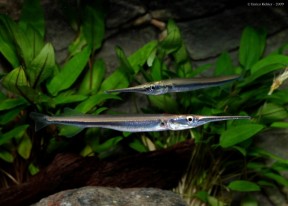
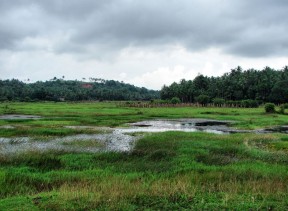
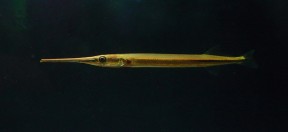
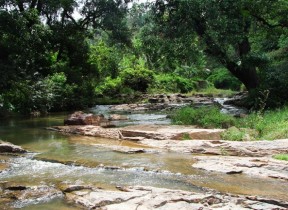
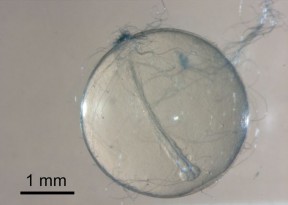
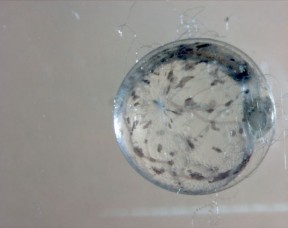
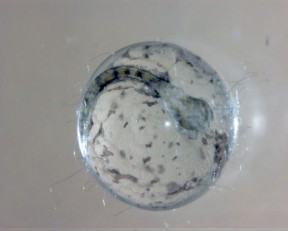
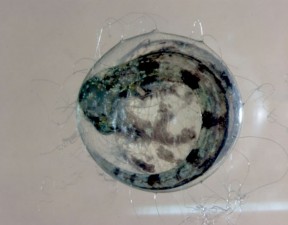





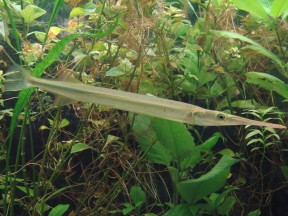
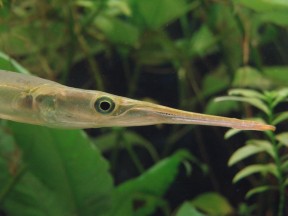



May 6th, 2013 at 4:00 pm
I breed this species currently. The adult fish (group of 5) are fed with living goldfish (I could not detect a sex. dimorphism) in a relatively small tank. Breeding mood is connected to very good feeding and perhaps an increase in water temperature. It seems that the female prefers the plants (java moss, anubias) subjected to the strongest water currents to deposit her eggs (directly at pump outflow). Thus, I think a place with stronger current is necessary, also since eggs that are more sheltered tend to mold and die (Terminalia catappa leaves may help a lot!). The threads with which the eggs are attached to plants may be longer than 10cm! The eggs are deposited continuously, not in a cohort of more than a few. I transfer the eggs to a small tank with carbone filter and the mentioned leafs were the babys hatch more reliably than in the main tank. The babys hatch and start to feed after a few hours. Artemia naupli seem to be a good food in the first days to weeks.
May 6th, 2013 at 5:42 pm
Hi BoBoBaer and many thanks for the information. May we add it to the main article above with credit to yourself?
May 7th, 2013 at 7:50 am
Sure, and feel free to correct my english 🙂
I could also provide you some pictures of developing eggs and juveniles if you tell me how.
May 7th, 2013 at 1:09 pm
Wonderful, thanks! We’ve got a load of additional pics of this species so will take the opportunity to spruce up the profile in general. 🙂
I have your email address via the site admin – would it be ok to send you a mail rather than posting mine here?
May 7th, 2013 at 1:46 pm
sure!